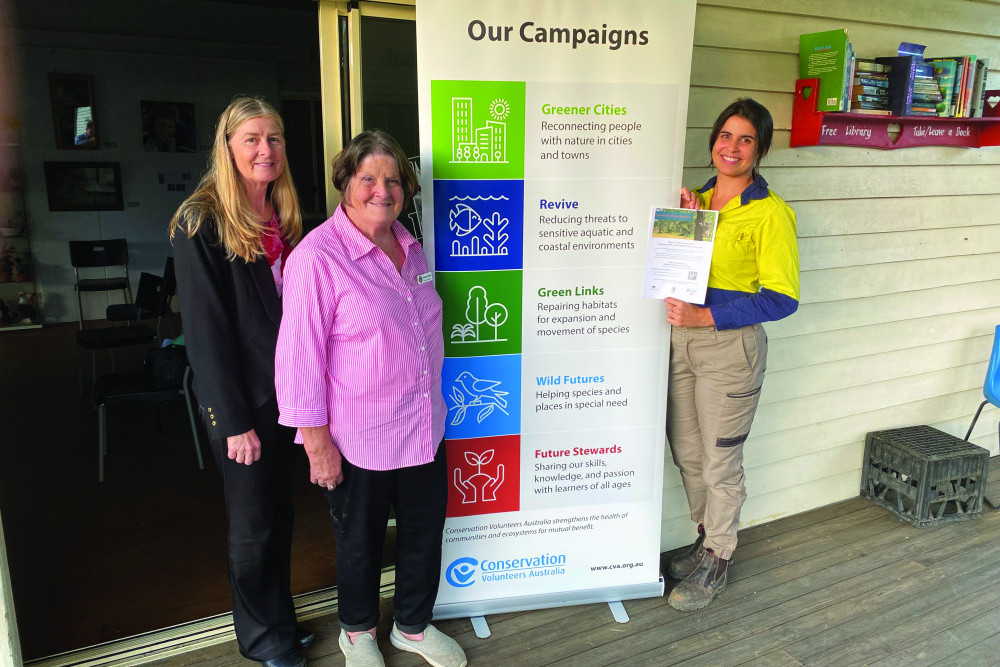News
2 June, 2022
Become a citizen scientist
WOULD-BE scientists have an opportunity to make their dream come true, joining with Convservation Volunteers Australia to become ‘citizen scientists’.

With funding from the Federal Bushfire Recovery Grants Program, Conservation Volunteers Australia has been working on projects at locations around the Somerset region, and is now moving into the next phase of the program, said Maria Borges, the project co-ordinator.
A key element in the program is ‘Citizen Science’, Ms Borges said, designed to give residents the skills and knowledge to volunteer ‘in greater depth’.
“It is about giving people skills and knowledge that is not generally available through volunteering alone, it gives greater depth to the experience,” Ms Borges said.
Following on from the previous bushfire restoration efforts Conservation Volunteers Australia completed while partnering with Somerset Regional Council, Ms Borges said the group is now looking to engage with the community.
“We want to engage with the community and give them ownership of the different sites, we are not looking to create another organisation, this is more about getting individuals involved in the existing projects.
“We want to work with other groups, to connect individuals to the existing network of groups, to allow them greater involvement.”
Describing the program as ‘light touch’, Ms Borges said it works across a number of areas, such as being able to identify sick animals,and providing information on who to call.
“We are not saying ‘try to catch the animal’, we are giving people the knowledge of who to call, so they can do their work.”
Other aspects allow people to work from home, carrying out photo analysis to look for evidence of animals in a location.
“We have a network of static cameras, I load the photos to a website, and we ask people to go through the images and find and indentify the animals active in the area, they then upload their findings, and it creates an interactive map we can share with councils and other government agencies for conservation purposes.”
The next project meets at Shines Rd, Wivenhoe Pocket on Saturday, June 4, from 9am, for more information contact Maria Borges on 0477 520 041.

